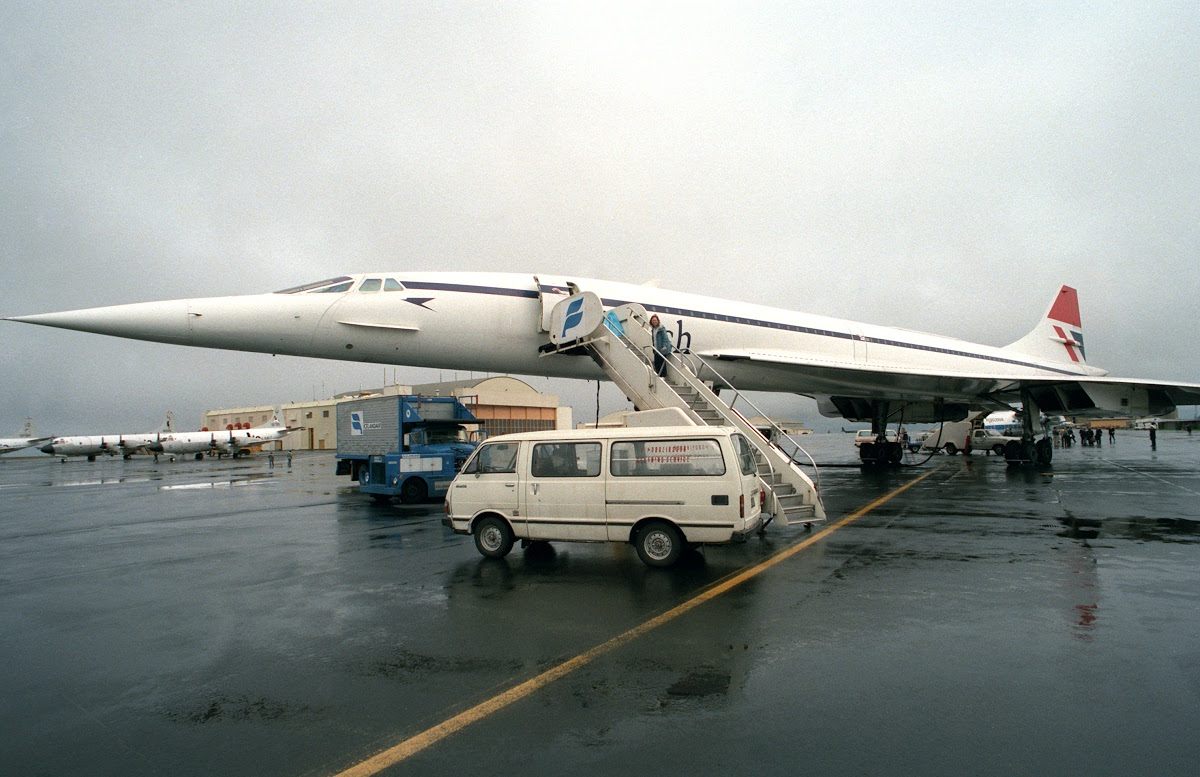Concorde
Concorde, the world’s first (and so far, only) supersonic airliner, was retired two decades ago in real life. However, in the skies of VATSIM, she lives on in the hands of some nostalgic pilots. Keflavik (BIKF) in particular was an occasional charter destination for Concorde in real life, and indeed, one may occasionally still find virtual pilots flying virtual Concordes into BIKF on VATSIM.
For the most part, controlling Concorde is not unlike controlling any other civilian IFR aircraft. However, because of Concorde’s unique design and high-altitude, high-speed regime of flight, some unique considerations should be taken into account.
Flight Planning and Clearance Delivery
Below is an example of a Concorde flight plan routing from BIKF to EGLL:
RIMUM/M200F430 DCT C/61N020W/M200F450F600 DCT 5230N01500W LULOX/N0566F350 DCT TACQI DCT BAPHU DCT OCTIZ DCT SIRIC
Some waypoints are prefixed with “C/," and have two sets of flight levels listed for said waypoint. This indicates that Concorde will perform “cruise climb” at those waypoints within the levels listed, which means that its autopilot will automatically perform gentle climbs and descents in order to achieve the most optimum cruise level for the aircraft.
E.g., "C/6120N/M200F450F600" means the aircraft will cruise climb beginning at 6120N at Mach 2, between FL450-600.
When issuing an oceanic clearance, it is generally not required to ask for Concorde's Mach number, since Concorde's supersonic cruise speed is always Mach 2.00. Additionally, Concorde typically cruise climbs in the block FL450-FL600.
Euroscope’s MACH field only allows Mach numbers of up to 1.00, and the CFL/RFL fields do not support block levels. Therefore, DEL controllers should input 1.00 into the MACH field, and note the flight's actual Mach number and block level on the scratchpad (for example, "M200 F450-F600.")
An example of a typical Concorde clearance is as follows:
🎧 BAW Concorde 9035, oceanic clearance to London Heathrow, via the OMNI 4A departure, RIMUM, 61N020W, 5230N01500W, initial climb 5000ft, Mach 2, squawk 4307.
Aircraft Characteristics
Ground
In terms of ground handling, Concorde may be handled more or less the same as any other commercial airliner.
However, it is worth noting that Concorde does have a much higher fuel burn than most other airliners. While Concorde pilots on VATSIM should not be afforded special priority over other pilots, it is important for GND controllers to ensure they experience the minimum possible delay on the ground.
Subsonic
Generally, Concorde can abide by most standard instructions while subsonic, albeit at much higher speeds and climb/descent rates.
Climb
Concorde becomes more fuel efficient the faster it goes. Generally, a departing Concorde will accelerate to the 250 KTS speed restriction immediately after departure, at which speed it will generally achieve a climb between 1000-2000fpm.
Traffic permitting, controllers may consider granting free speed/high-speed climb for Concorde, to improve its fuel efficiency. If allowed to climb unrestricted Concorde will generally fly ~300 KTS below FL100, at which speed it may achieve a 3000+fpm climb rate.
Above FL100, Concorde generally climbs at 400 KTS/Mach 0.95. If any subsonic cruise is required by Concorde, it will do so at Mach 0.95.
Descent
At subsonic speeds, Concorde descends rapidly, at 350 KTS/3000fpm. Controllers should account for this when vectoring Concorde for arrival.
In situations of heavy traffic, Concorde can hold like any other aircraft, but it is recommended to have Concorde soak up any anticipated delay in the enroute phase. If absolutely necessary, Concorde may slow to 280 KTS during subsonic descent.
- Above FL150, Concorde generally holds at 285 KTS and 1.5 minute legs.
- Below FL150, Concorde holds at 250 KTS and 1 minute legs.
Supersonic
In the Reykjavik CTA, supersonic flight is prohibited:
• Over land, and within 12 NM of the coast.
• Over water, and below FL150 (even if >12NM from the coast.)
Controllers should be mindful not to issue approval for supersonic climb/acceleration without these conditions being satisfied.
Concorde will not be able to accept any form of stop climb/descent instruction during its supersonic acceleration, cruise, or descent. Such instructions will negatively impact its fuel consumption and cooling, and at worst may force the aircraft to divert. Additionally, it is not advised to vector Concorde while supersonic, as the extremely high speed of flight generally results in very wide turn radii.
Hence, when approving Concorde's supersonic climb/acceleration,acceleration or descent, controllers should ensure that Concorde's flight path is entirely clear of conflicts. If there is any conflicting subsonic traffic, controllers should either issue traffic avoidance instructions (vectoring, speed control, climbs/descents, etc.) to the subsonic aircraft,aircraft. orFor departures, controllers may also delay approving Concorde'sthe supersonic climb/acceleration until clear of conflict.
Approval for supersonic climb/acceleration may be issued like in the example below:
BAW Concorde 9035, supersonic climb and acceleration is approved, block FL450 to FL600.

